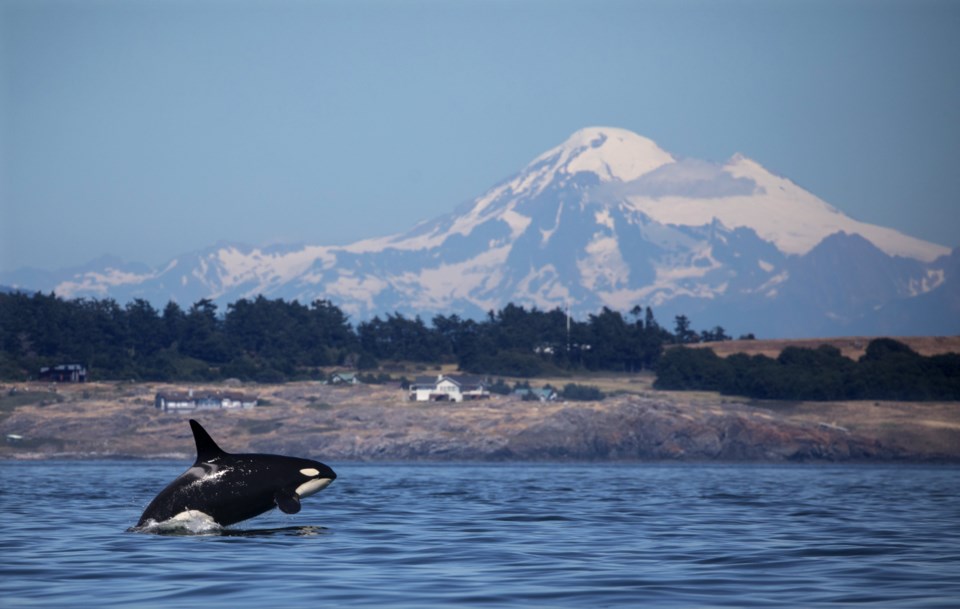The salmon-eating southern residents are a seasonally migrating population of killer whales (Orcinus orca) that forage along the southern coast of B.C. during summer seasons.
A new study by the University of British Columbia determined that the endangered southern residents’ population hasn’t been getting enough food in recent years, which could affect the whales’ reproductive ability and survivorship.
The study found that the whales suffered from an “energy deficit” in six of the past 40 years, particularly between 2018 and 2020 — which means the orcas were not able to get enough calories from their diet to fulfill their energy needs.
On average, the energy shortfall is more than 28,000 calories — around 17 per cent of the daily required energy for an adult killer whale, said lead author Fanny Couture, a doctoral student at the Institute for the Oceans and Fisheries (IOF) and Ocean Wise.
“There are potential consequences when the energy requirements were not met,” said Couture. “It's possible that they will not be able to reproduce as much and (that we will see) more death in the population.”
It could worsen the survivorship of the already endangered species, she added. “There's really a sense of urgency.”
The southern resident population has been in Canada since 2008. Only around 73 exist in the world as of October 2021.
“It's really hard to find a culprit on what is the main cause for the decline of the southern resident killer whale population,” said Couture, “But our study showed that they are limited by food and it seems pretty reasonable to believe that this limitation could have a dramatic impact on this population because it's at such low levels.”
Previous research suggested that the orcas’ dwindling population could correlate with the decreased abundance of chinook salmon — southern residents’ primary prey.
But Couture emphasized that instead of looking at the numbers of prey as a whole, we should pay more attention to the number of those older salmon as their age and size matter.
“The southern residents feed by preference on the older, heavier, more calorie-rich fish, which will be the fish that are age four and age five,” said Couture. “Those fish are actually a good indicator of whether or not these southern residents could meet their energy requirements because older fish would provide more calories.”
However, four-year-old Chinook salmon have been than younger ones since the early 2000s.
The study suggested considering using size-selective fishing gear to promote the survival of larger chinook salmon in the area.
Meanwhile, the study calls for protecting different Pacific salmon as well, including chum salmon, as they have become alternative targets for southern residents when their favourite Chinook salmon is off the menu.
“Both killer whales and Chinook salmon are important, iconic species for the west coast of Canada,” Couture said.
Chinook stocks of the Salish Sea have since 1984.
Other potential factors that could affect Chinook salmon’s abundance include marine mammal predation, climate change and underwater noise pollution from vessels, Couture added, encouraging future research in these areas.






 and new calf (right). Bethany Shimasaki, Western Prince Whale Watching, PWWA.jpg;w=120;h=80;mode=crop)
